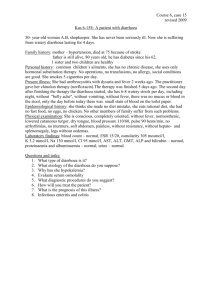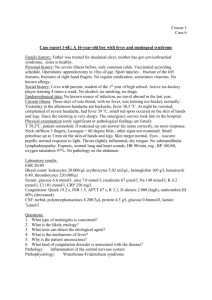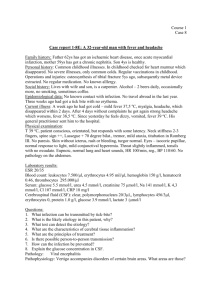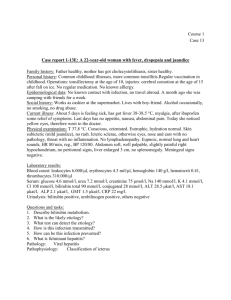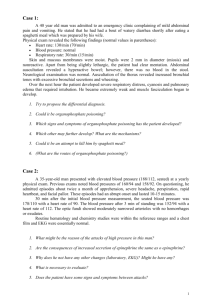Fever – case study No 12:
advertisement
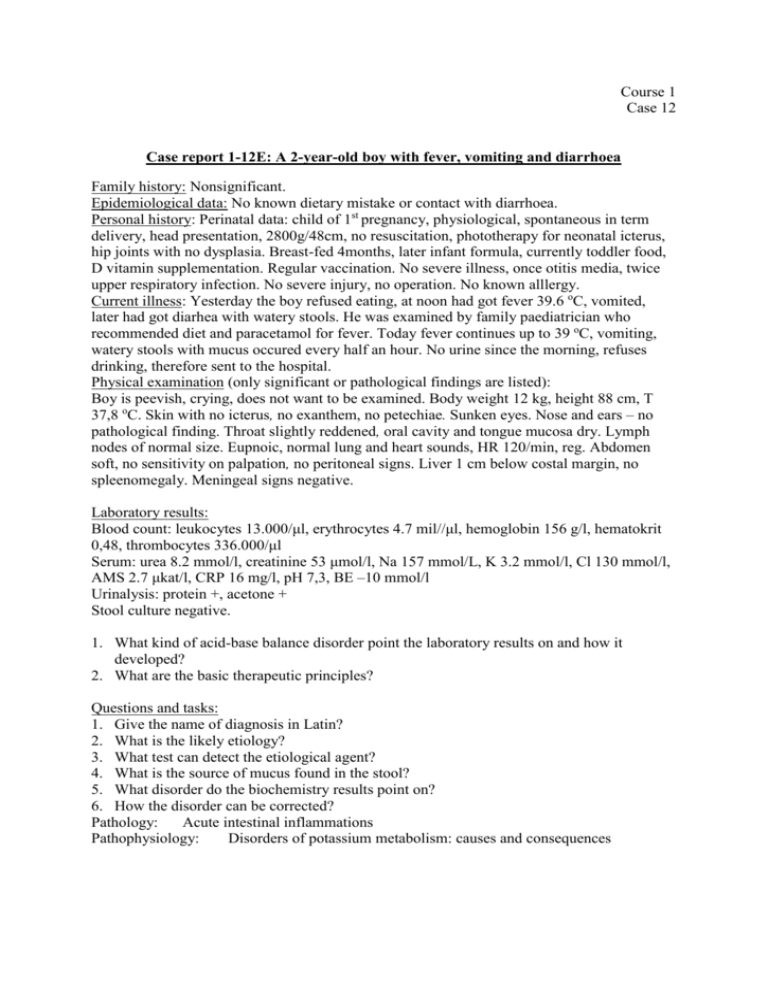
Course 1 Case 12 Case report 1-12E: A 2-year-old boy with fever, vomiting and diarrhoea Family history: Nonsignificant. Epidemiological data: No known dietary mistake or contact with diarrhoea. Personal history: Perinatal data: child of 1st pregnancy, physiological, spontaneous in term delivery, head presentation, 2800g/48cm, no resuscitation, phototherapy for neonatal icterus, hip joints with no dysplasia. Breast-fed 4months, later infant formula, currently toddler food, D vitamin supplementation. Regular vaccination. No severe illness, once otitis media, twice upper respiratory infection. No severe injury, no operation. No known alllergy. Current illness: Yesterday the boy refused eating, at noon had got fever 39.6 oC, vomited, later had got diarhea with watery stools. He was examined by family paediatrician who recommended diet and paracetamol for fever. Today fever continues up to 39 oC, vomiting, watery stools with mucus occured every half an hour. No urine since the morning, refuses drinking, therefore sent to the hospital. Physical examination (only significant or pathological findings are listed): Boy is peevish, crying, does not want to be examined. Body weight 12 kg, height 88 cm, T 37,8 oC. Skin with no icterus, no exanthem, no petechiae. Sunken eyes. Nose and ears – no pathological finding. Throat slightly reddened, oral cavity and tongue mucosa dry. Lymph nodes of normal size. Eupnoic, normal lung and heart sounds, HR 120/min, reg. Abdomen soft, no sensitivity on palpation, no peritoneal signs. Liver 1 cm below costal margin, no spleenomegaly. Meningeal signs negative. Laboratory results: Blood count: leukocytes 13.000/μl, erythrocytes 4.7 mil//μl, hemoglobin 156 g/l, hematokrit 0,48, thrombocytes 336.000/μl Serum: urea 8.2 mmol/l, creatinine 53 μmol/l, Na 157 mmol/L, K 3.2 mmol/l, Cl 130 mmol/l, AMS 2.7 μkat/l, CRP 16 mg/l, pH 7,3, BE –10 mmol/l Urinalysis: protein +, acetone + Stool culture negative. 1. What kind of acid-base balance disorder point the laboratory results on and how it developed? 2. What are the basic therapeutic principles? Questions and tasks: 1. Give the name of diagnosis in Latin? 2. What is the likely etiology? 3. What test can detect the etiological agent? 4. What is the source of mucus found in the stool? 5. What disorder do the biochemistry results point on? 6. How the disorder can be corrected? Pathology: Acute intestinal inflammations Pathophysiology: Disorders of potassium metabolism: causes and consequences
